Dividend strategies have earned an increasingly large share in portfolios during this volatile market. However, there are important differences between dividend growth and high dividend yield strategies. Choosing the approach best suited to today’s market is key.
Choosing a Dividend Strategy for Today’s Markets
-
Viewed as a defensive strategy, they have a yield component that may cushion market drawdowns.
-
When broad benchmarks like the S&P 500 decline, they have generally outperformed, which they have done this year through May.
It’s imperative, however, to choose carefully between strategies focused on high dividend yield and strategies focused on dividend growth. Three challenges facing investors today—rising interest rates, slowing economic growth and income scarcity—could make dividend growth a better choice for the current environment.
We’ll use two popular benchmarks to illustrate this in the commentary that follows. The Dow Jones U.S. Select Dividend Index measures the performance of 100 high-dividend-paying companies and represents the leading stocks by dividend yield. And the S&P 500 Dividend Aristocrats Index represents companies that have grown their dividends for at least 25 consecutive years.
Dividend Growth Has Outperformed During Rising Rates
A hawkish Federal Reserve and a 143-basis-point increase in 10-year Treasury yields year to date through the end of April have been blamed for recent equity market weakness. But stocks can and have performed well during rising rates. Dividend investors have witnessed varying performance. High dividend yielders have outperformed dividend growers in the current rising rates period, measured from August 4, 2020. However, in the five prior rising rates periods dating back to 2005, dividend growth has outperformed high dividend yield by an average of roughly 4%, making it a potentially all-weather strategy.
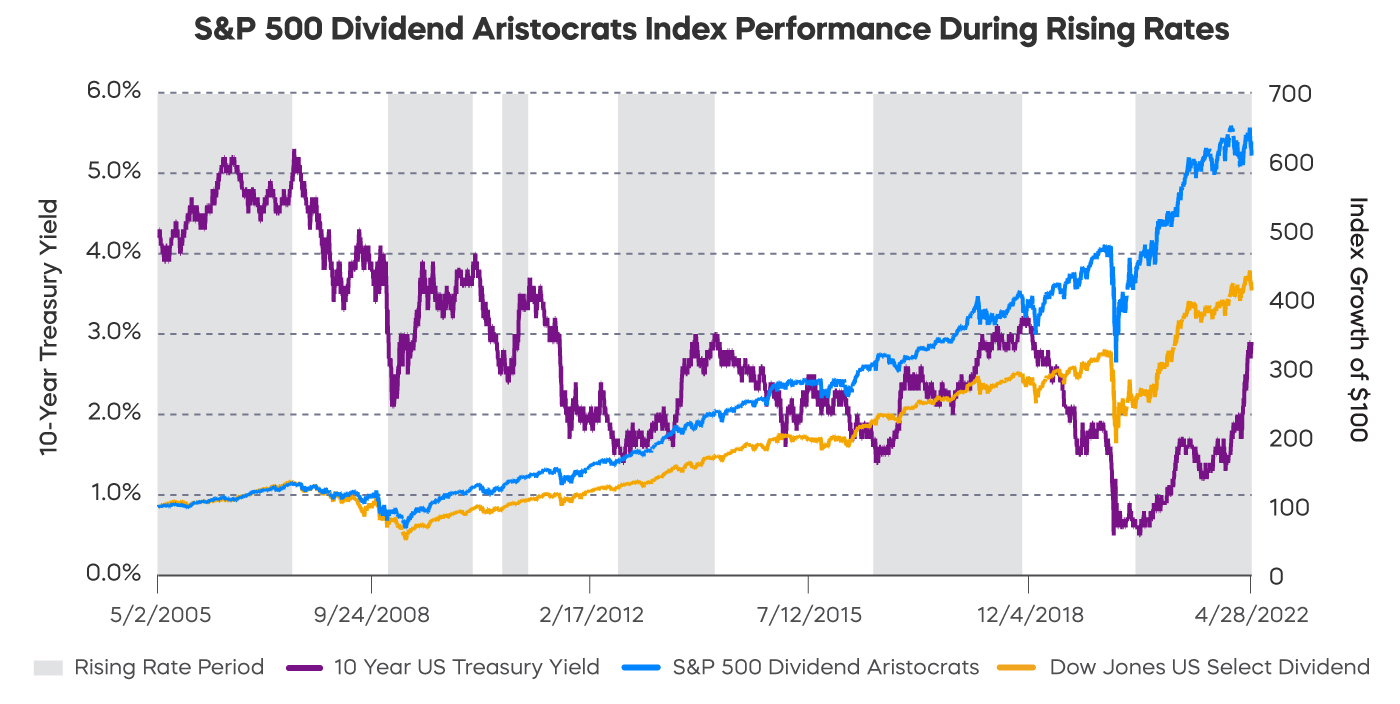
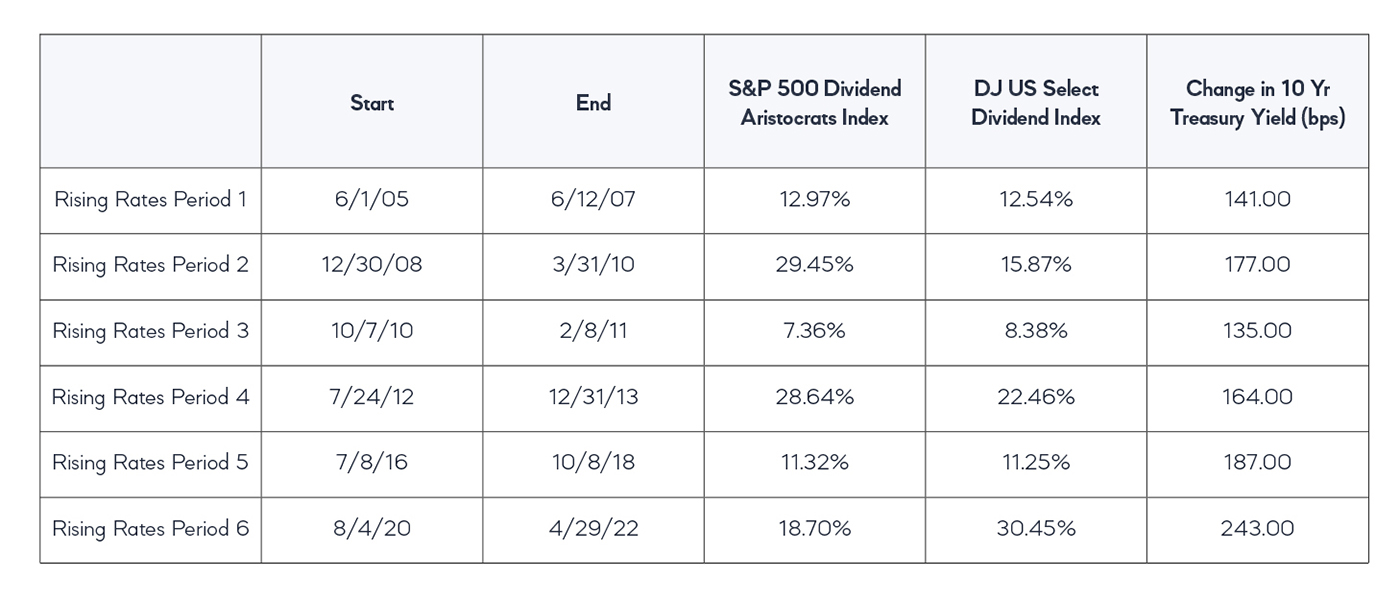
Dividend Growers Can Weather Market Turbulences Better
The Fed plans to tighten monetary policy and raise rates to combat inflation have led to uncertainty and recessionary fear. Less uncertain is the potential for slowing economic growth and a more difficult business environment. In fact, first-quarter 2022 gross domestic product (GDP) contracted 1.5%, and estimates for second-quarter GDP are 1.9%1. Dividend investors should position for market turbulence.
High-quality companies that have consistently grown their dividends tended to have stable earnings, solid fundamentals and strong histories of profit and growth. Dividend growers have also produced higher returns on assets, equity and invested capital than high yielders. As a result, they have been generally better positioned to weather potentially slowing growth.
By contrast, high dividend yield stocks tend to be of lesser quality with less flexibility in periods of stress. They often carry more debt and devote more cash flow to paying dividends. Net debt to EBITDA2 is 50% greater than for dividend growers, and interest coverage—defined as EBIT3 to interest expense, or how much earnings a company produces to service debt—is nearly 2.5 times greater for dividend growers than high dividend yielders.4
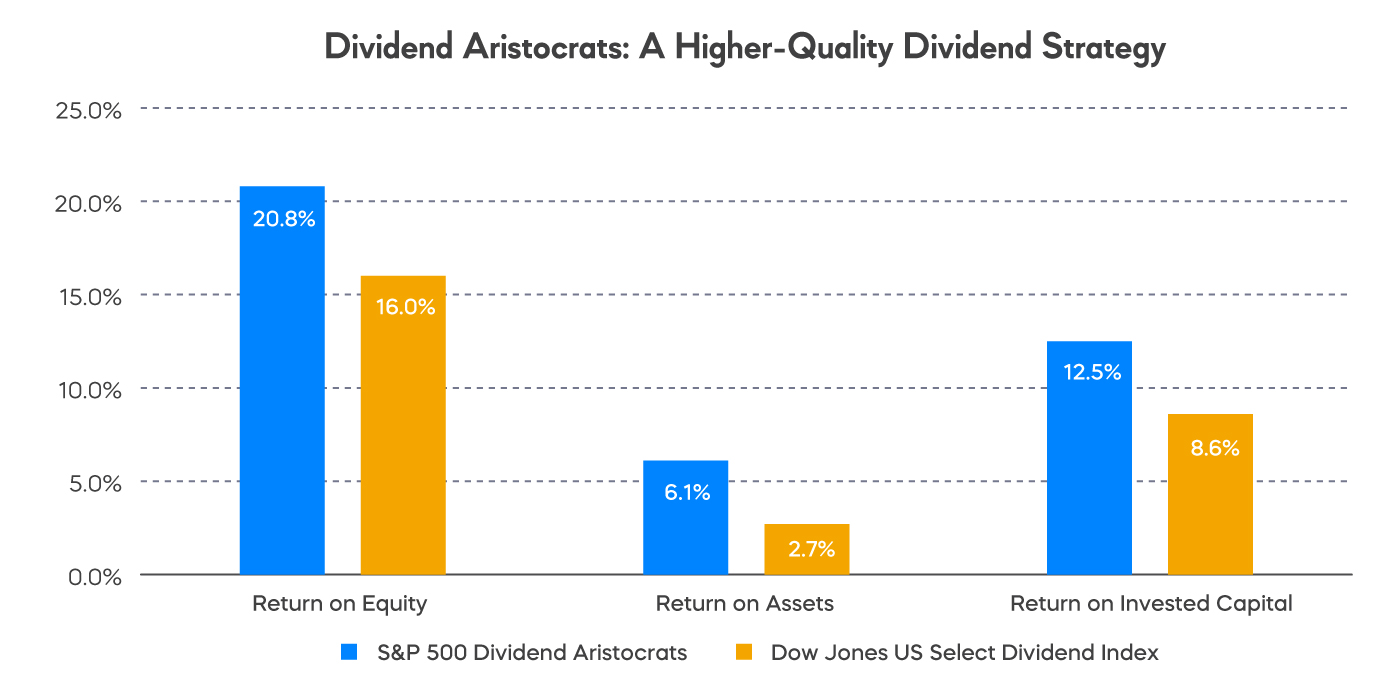
Dividend Growers Can Offer Sustainable and Growing Income
Despite rising interest rates, yields remain historically low. Add in the dividend cuts during the early pandemic and today’s higher inflation, and it’s apparent that income investors are struggling to find sustainable and growing sources of income.
Reaching for the highest level of yield is rarely the answer. When lower-quality, higher-yielding companies face difficult business decisions, dividends are often among the first casualties. In fact, the dividend payers within the S&P 500 ranked in the top 20% by yield had nearly three times the dividend cuts compared to those in the bottom 20% during 2020, when dividends were under pressure.
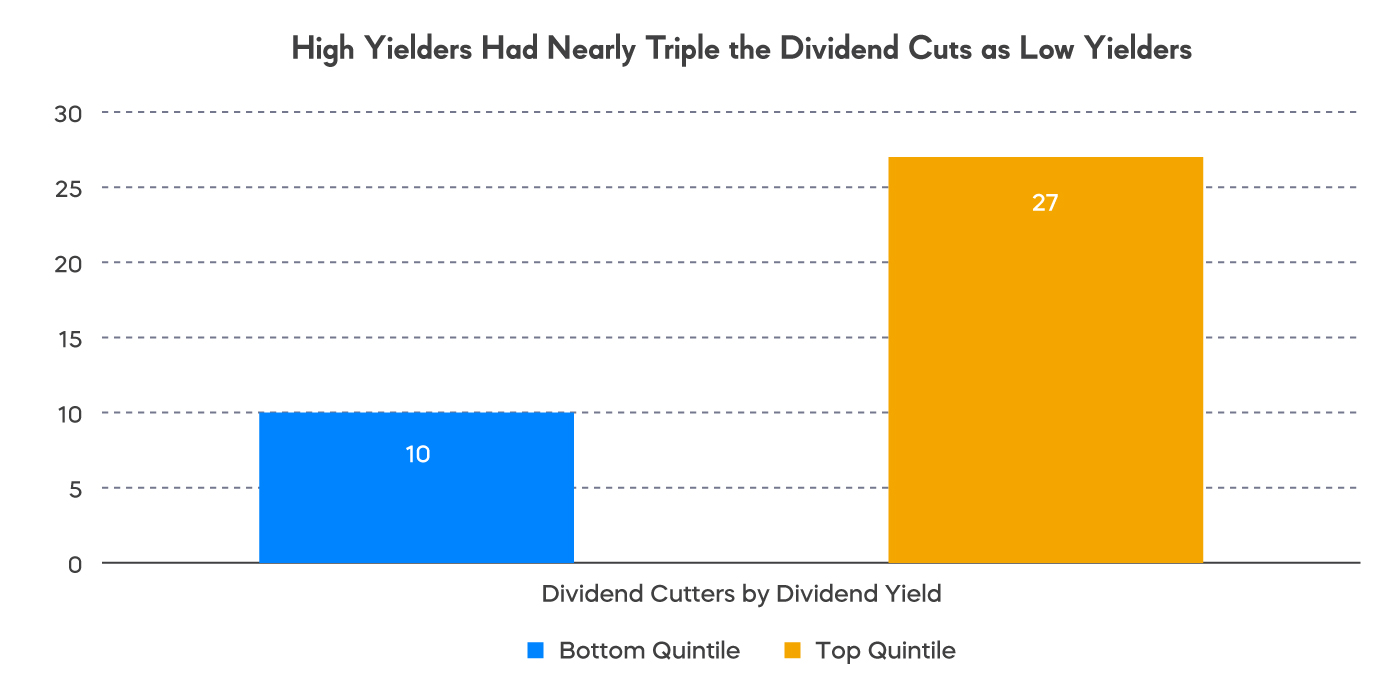
Selecting a dividend strategy by its initial yield is a similarly poor choice because the growth of the dividend over time determines income payouts in future years. The chart below illustrates this point. Despite having a lower initial yield in 2006 compared to high dividend yield (2.6% vs. 3.9%), dividend growth has produced higher and more sustainable income levels over time. The secret sauce is that the S&P 500 Dividend Aristocrats have grown their annual dividends at a compound annual rate almost double that of high dividend yielders.
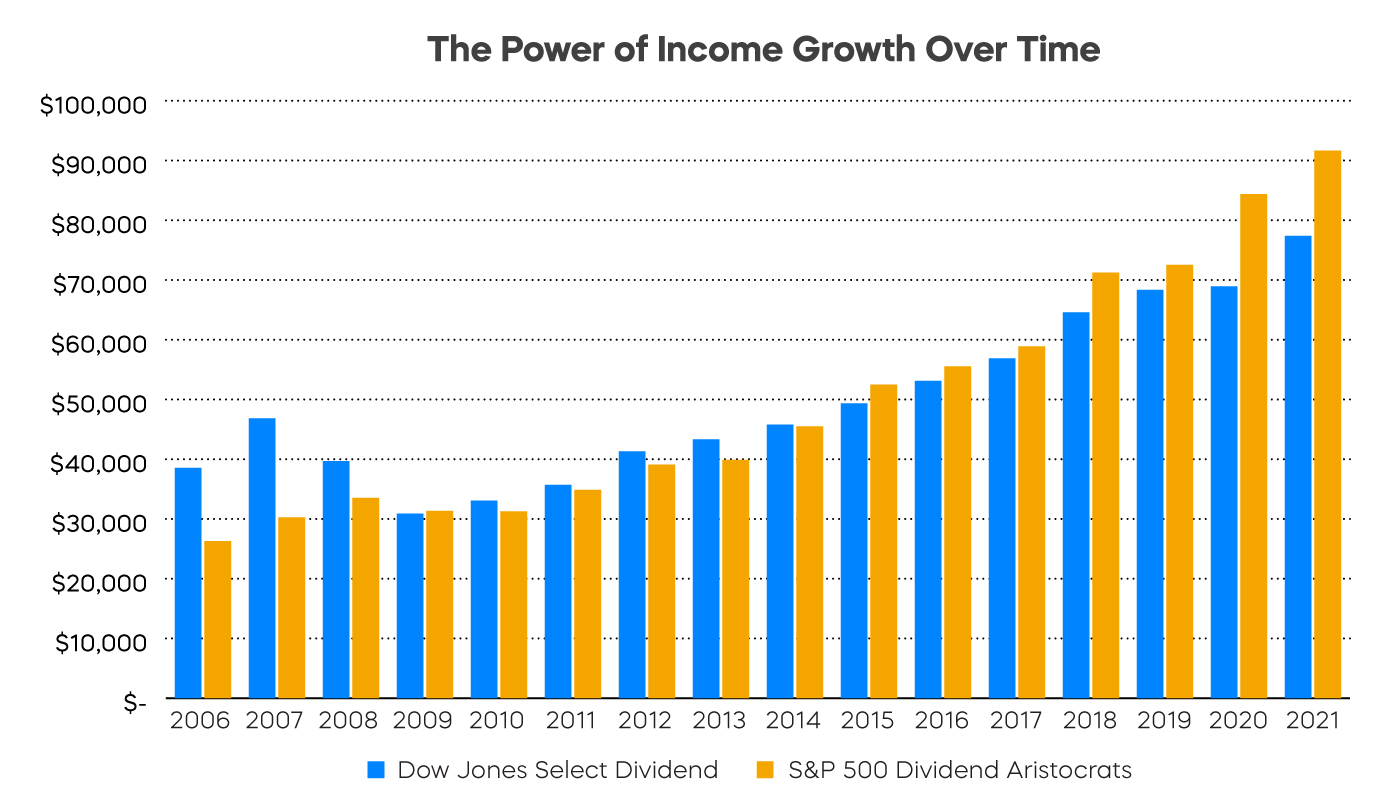

The Takeaway
Choose your dividend strategy wisely. Dividend strategies are popular portfolio building blocks, but there are important differences between high dividend yield and dividend growth strategies. The potential for continued interest rate increases, slowing economic growth and income scarcity makes a dividend growth strategy, like the S&P 500 Dividend Aristocrats, seem well suited for today’s market challenges.
1The Conference Board.
2EBITDA is earnings before interest, taxes, depreciation and amortization. It is used as an indicator of the overall profitability of a business.
3EBIT is earnings before interest and tax.
4FactSet.